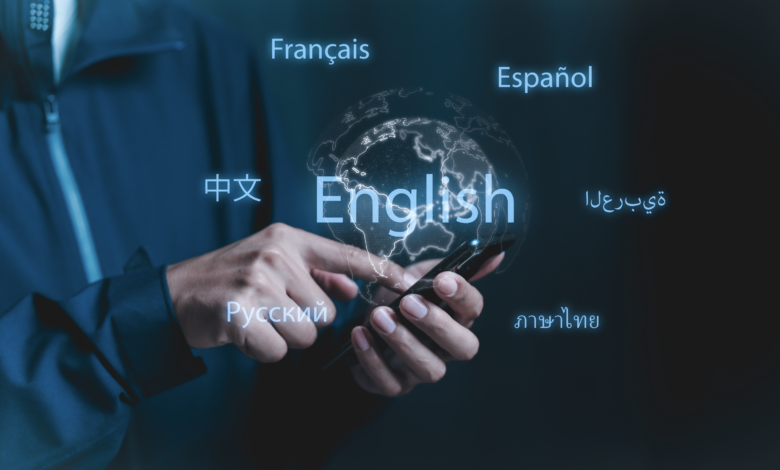
In an increasingly global society, where more students are seeking to study abroad and learn a variety of skills that could unlock opportunities in the global job market, language remains one of the most significant barriers to a fully accessible educational landscape.
It’s estimated that at least half of the global population is bilingual; however, international students still face various challenges when taking courses abroad or online, especially when communication occurs in a language other than their native tongue. Language barriers between teachers and students can lead to unfair assessments, misunderstandings of content, and increased anxiety and stress levels.
For instance, in academic settings where English is the primary language of instruction, international students often encounter difficulties that extend beyond their English proficiency, due to the diversity of English dialects spoken worldwide. Universities that predominantly teach in English, particularly in countries like the UK or the US, frequently rely on a standardised notion of the language. This can create challenges for non-native English speakers (students and teachers), whose versions of English—shaped by their cultural and linguistic backgrounds—may differ from what is traditionally accepted as “standard” English.
While online translation tools have been helpful since the mid-1990s, not all of them are time-efficient, accurate enough, or safe for students in terms of data privacy. However, the evolution of generative AI provides additional opportunities for the education sector. Edtech providers can now leverage its power to embed AI-powered translation tools within the virtual learning environment (VLE) to help boost student comprehension and support better learning outcomes.
Language as a Gateway to Accessibility
By providing access to translation directly within discussion boards or messaging inboxes in the VLE, these AI-powered tools can help students studying in their non-native language to better comprehend course content and discussions and improve their communication with peers and teachers by reading it in their own native language. This technology has also extended to help teachers and administrators interact and receive answers in their native language when navigating online tech communities. VLEs equipped with AI-powered tools, and trained with the official product guides, enable educators, administrators, and students to obtain the information they need quickly, allowing them to return to their learning experiences.
Although traditional translation tools have been available for years, they are not always practical for supporting learning, especially where nuances are involved. Having the right tools can make a significant difference for students when it comes to fully understanding a classmate’s comment on the discussion board or a message with feedback from their teacher. Additionally, AI tools integrated directly within the VLE streamline the translation process, eliminating the need for students to copy and paste into an external tool.
AI Tools to Power Education Policy
In the UK, where international students have a significant impact on both the economy and cultural landscape of universities, it is worth considering how language requirements can act as barriers for talented students around the world who wish to study in the UK. As AI language tools advance, they could become a key factor in this change, enabling more students to pursue their studies in the UK.
Currently, international students are generally required to demonstrate a high level of English fluency through tests such as IELTS (International English Language Testing System) or TOEFL (Test of English as a Foreign Language), necessitating near-native proficiency for admission to most universities. This requirement often excludes many qualified students who might have an advanced command of English rather than native-like proficiency.
As cloud-based VLEs also integrate with other applications and large digital writing assistants, institutions could provide the necessary tools for real-time translation and contextual language support, leading to better cohesion within the lecture hall and online. By using AI-powered translation tools, students and teachers could benefit from more inclusive and accessible learning experiences that effectively foster and facilitate lifelong learning and student mobility.
Thoughtful Design and Integration
With the rise of AI tools, particularly in the past few years, there has been some hesitation to fully adopt or trust their efficacy, particularly within the education sector. Some educators worry that generative AI will encourage cheating or disrupt learning. While these concerns have a place in the conversation and help to maintain accountability, it is important to acknowledge the benefits of incorporating AI-powered tools into education and the opportunity to widen accessibility and inclusion, especially through language.
Incorporating thoughtfully designed AI tools into a VLE allows ed-tech providers to empower institutions to provide better classroom engagement and student attainment. The key factors are the design—where providers need to ensure their tools are accurate and culturally sensitive—and the integration, allowing students to seamlessly utilise and benefit from the tools. For instance, new AI-powered translation tools embedded in VLEs can consist of a very small model that can run inside most web browsers if needed and mitigate cheating risk by being finely tuned for a specific task.
By thoughtfully integrating AI-powered translation tools into the fabric of education, we can move closer to a world where knowledge is truly accessible to everyone, regardless of language. This not only empowers individual students but also fosters a richer, more diverse academic community that reflects the globalised world we live in and can prepare future generations to fulfill the demands of a global workforce.




